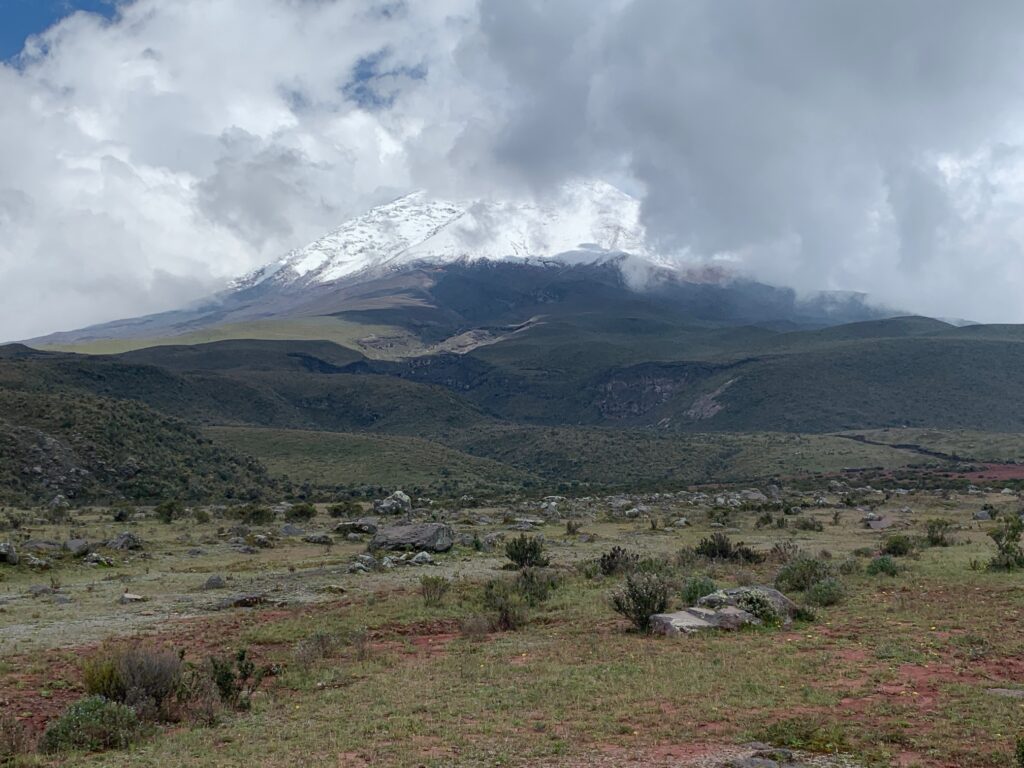19,000+ ft Cotopaxi volcano partially shrouded by clouds
Highlights
Took a day tour of Cotopaxi National Park. Hiked up to Rifugio Jose Rivas but did attempt to hike to the glacier due to the high altitude. This was our first time being at 16,000 ft above sea level. Used the city of Latacunga as our base.
Time of Visit: April 2024
Duration of Visit: Day tour
Description
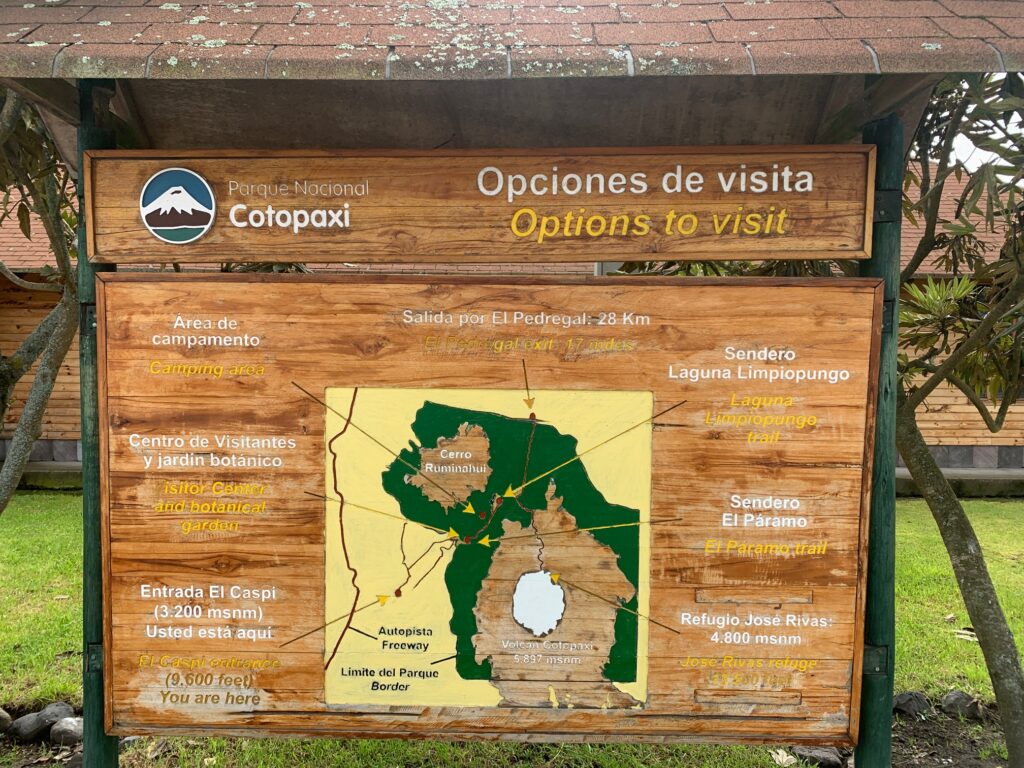

Cotopaxi is a snow covered active volcano between Quito and Latacunga. It is located in Cotopaxi National Park. It is the second highest mountain in Ecuador and one of the highest active volcanos in the world.
On clear days, you can see white clouds coming out of the crater. This is water vapor, is normal and safe according to our guide. If it was toxic gasses, the gas coming out of the crater would be blue colored. Gray colored would even be worse.
The volcano’s crater sits at 5,897 m (19,347 ft). Refugio Jose Rivas sits at the volcano’s northern flank at 4,864 m (15,953 ft). The view from the refugio is literally breathtaking and so is the hike up if you are not used to a high altitude environment. Hiking to the refugio and the shrinking glacier on the northern flank is one of the popular activities in the park. Getting to the refugio involves a steep hike for about 1.5 kilometers (almost 1 mile) that begins at a parking lot at 4,500 m (14,760 ft).
Getting to Cotopaxi Volcano
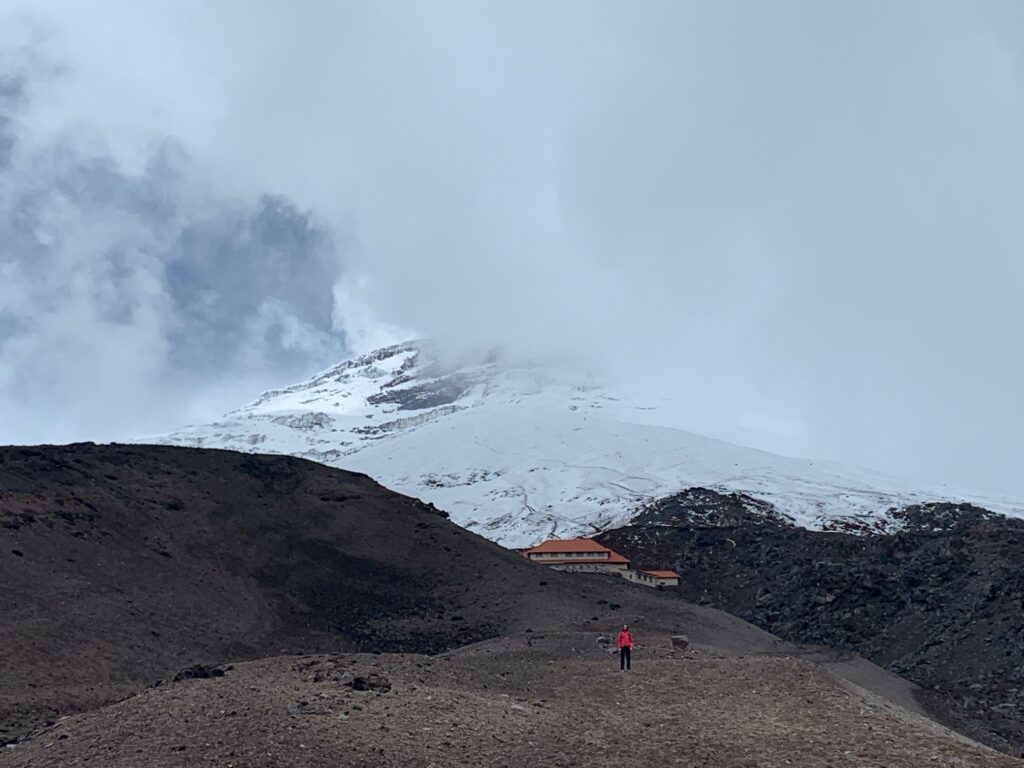

There are three ways you can get to the Cotopaxi volcano and Refugio Jose Rivas. One is to drive yourself to the parking lot if you have a rental vehicle. Just make sure it is not a small car as the road going to the parking lot is steep and very bumpy. Best to have a high clearance vehicle with four wheel drive. A guide is not required to enter the park. There is no entry fee either but visitors on their own are required to register at the entrance. By registering, you absolve the park of any responsibilities if anything was to happen to you.
If you do not have a rental vehicle, then you can sign up for a tour (second option)or you can hire a guide (third option). We signed up with Tour Operador The World Is Yours after searching “tour companies” on GoogleMaps in Latacunga. The cost was $30 pp with door to door pick up and return at our accommodation in Latacunga. We were picked up at 8 AM and got back at 3 PM. The tour did not include lunch.
Hiring a guide takes a little more effort. First you have to get on a bus that runs between Quito and Latacunga. Then you have to get off the highway at the road that leads to the national park. The guides are stationed here with their vehicles waiting for visitors. Some negotiations may be involved. And if you are by yourself, there may be some waiting for additional riders to make it worthwhile for the guide.
Our tour guide’s name was Nancy. Her fall back work is to wait at the highway if the tour agency does not have any tours lined up for her. Nancy’s WhatsUp number is +593 99 819 2010. She was very patient with us during our slow ascent. Her English is minimal though.
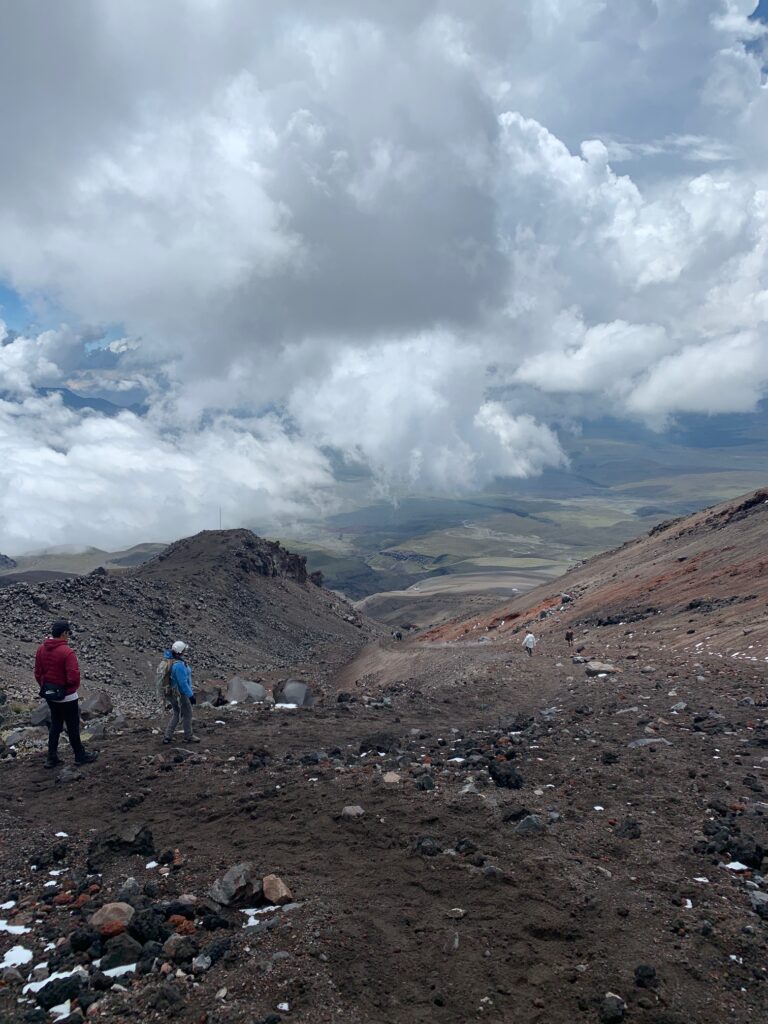

Getting to Rifugio Jose Rivas
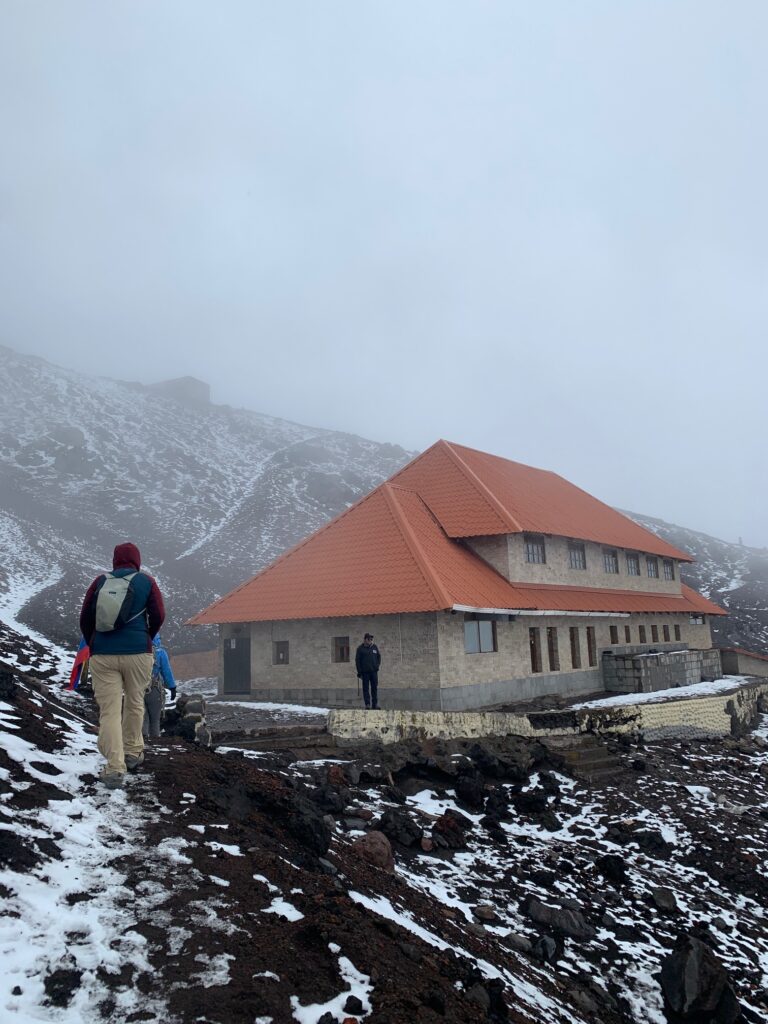

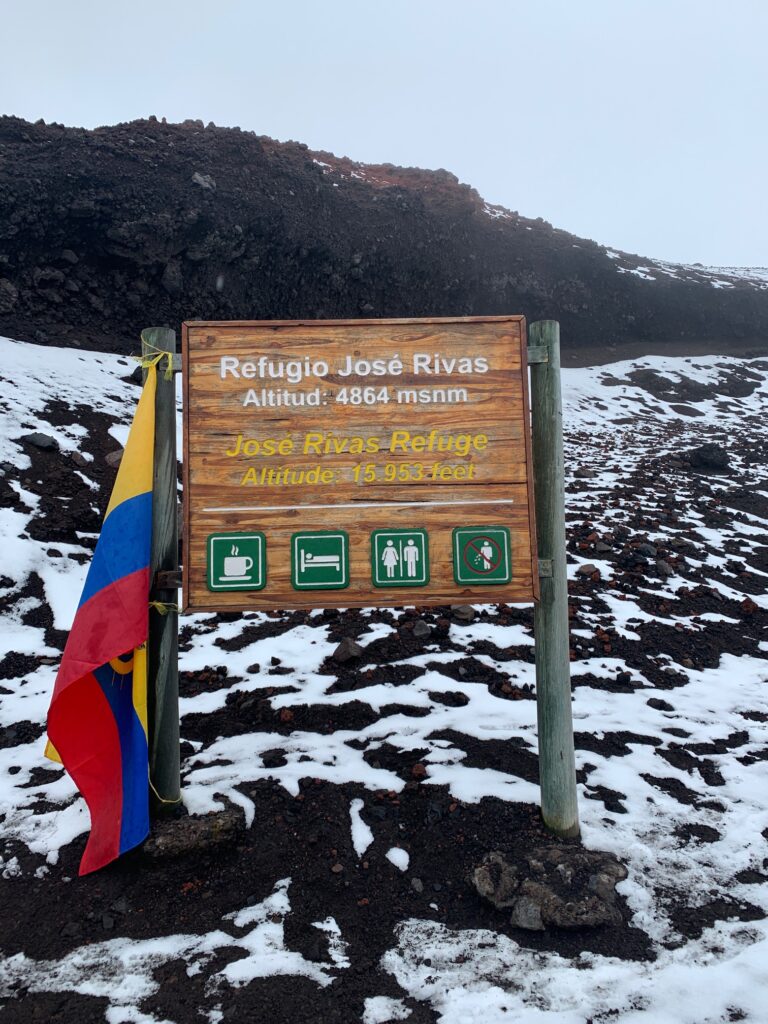

We immediately felt the thin air when we exited Nancy’s SUV at the parking lot. Nancy said that it normally takes 30 minutes to make the ascent to the rifugio. We took our time, walked slowly while taking deep breaths and small steps with frequent breaks. We did not want to push it as we were feeling a slight headache. It took us 1:15 to get to the refuge. But there were plenty of people, young and old, that did the ascent as if it was a flat trail. Perhaps they were used to the altitude or have strong legs or both. Whatever you do, listen to your body and slow down if you are getting short on breath or feeling lightheaded. Nancy would always remind us “despacio, despacio”.
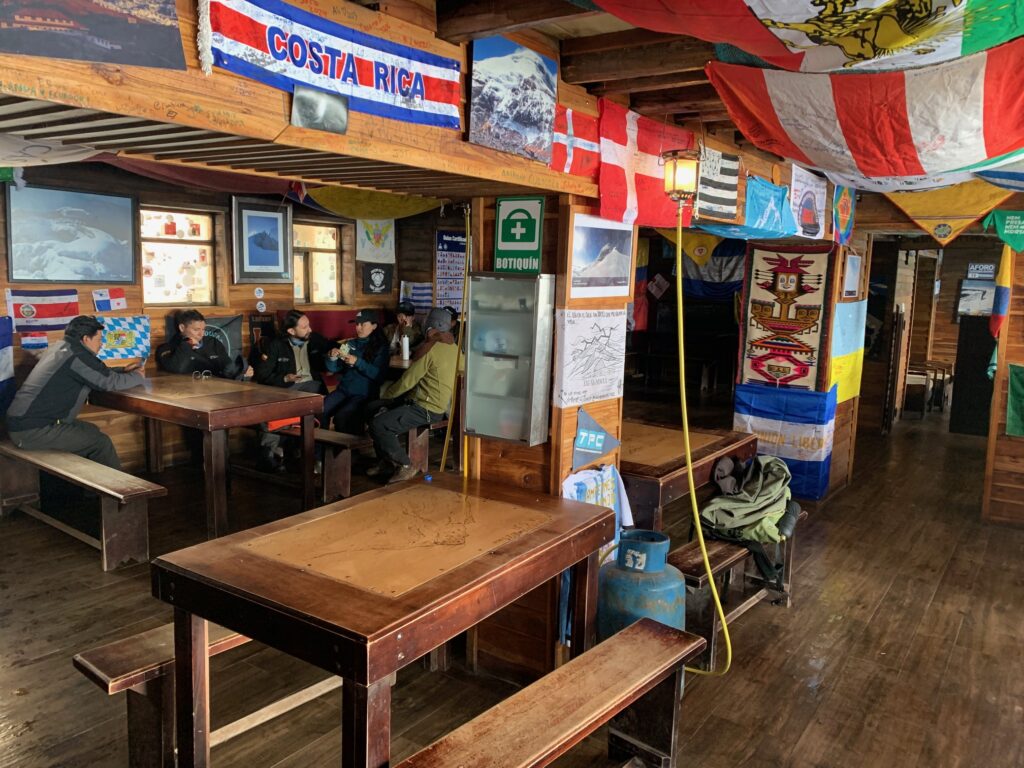

Weather During Our Visit
The volcano pretty much creates its own weather. The weather during our visit to Cotopaxi was much the same as in Quilotoa. It was partly sunny in the morning and became cloudy in the afternoon. The volcano was sometimes visible one minute only to be smothered by clouds the next minute. This was in the morning. It was totally not visible in the afternoon.
Nancy said that it was raining for most of the week before our tour. She said that a clear day in April is all up to chance.
Best Time to Visit
Nancy mentioned that February through June are unpredictable. The tradeoff is that it is not normally windy during these months. In the winter (July through October), it becomes drier, the skies are blue but the wind becomes stronger. Nancy said that the best months to climb Cotopaxi is November through January (summer) as it provides it the least chances of rain and strong winds.
Latacunga As A Base
Latacunga is a large city about an hour and half bus ride south of the capital city, Quito. There is really not much to do or see in Latacunga unless you enjoy shopping and eating Ecuadorian food. But Latacunga serves as a nice base to go to Quilotoa Lake and Cotopaxi National Park.
Getting to Latacunga
From Quito, visitors need to head over to the Quitumbe bus terminal in south Quito. Quito’s lone subway, L1, conveniently ends inside the bus terminal. If you took an Uber, chances are you will dropped off at the wrong terminal entry gate where you have to pay to get in. Just ask the guards where you need to go. We had to walk for about five minutes to get to the correct part of the bus terminal from where we were dropped off by our Uber driver.
Buying the bus ticket to Latacunga is straightforward. Just follow the signs for “BOLATERIA” once inside the bus terminal. There are 22 windows to buy bus tickets from with each window prominently showing the destination. Cost was $2.60 pp – cash. The cashier at the window will tell you the bus stall number for boarding. Buses leave every five minutes according to the cashier.
The buses to Latacunga look like tour buses, meaning they are not the “chicken bus” type. There is even on board movie although it is Spanish dubbed. Overall, it is a comfortable journey to the mountains.
Summary
Cotopaxi is the second highest peak in Ecuador. Its upper third was still covered with snow in April. The volcano is within the Cotopaxi National Park. The two most popular things to do are to hike to Rifugio Jose Rivas and hike to the glacier at the volcano’s northern slope. The views are literally breathtaking at almost 16,000 feet above sea level.
Latacunga serves as a good base to Cotopaxi. It is a good sized city with no shortage of restaurants and shops.
Cotopaxi volcano is a must visit if you find yourself in this part of Ecuador.

